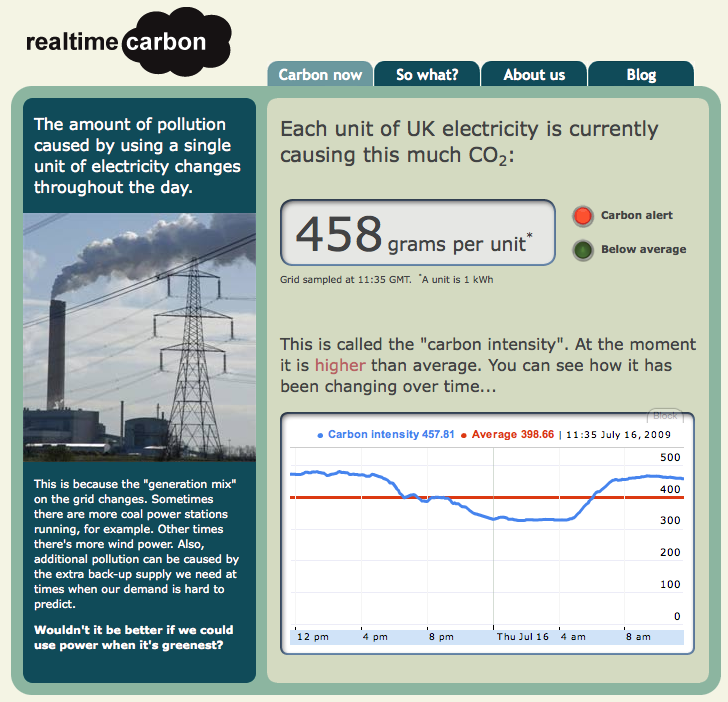
Photo credit Unhindered by Talent
-
Iowa, Texas tops [US] in wind power efforts
Iowa and Texas lead the nation in wind energy efforts, according to the annual report released Thursday from the American Wind Energy Association.
Iowa claims the title for the state with the largest percentage of electricity from wind energy. As of the end of 2009, over 14 percent of Iowa’s power was from wind energy
-
Smart Thermostat Software Startup EcoFactor Raises $3.5M
When 4-year-old EcoFactor, which makes software that intelligently manages connected thermostats, officially launched last November, a lot of folks took notice ? apparently including investors. On the heels of raising $2.4 million in December, EcoFactor announced this morning that it has raised another $3.5 million from RockPort Capital Partners.
-
Japan?s $1bn smart grid trial signs up Toyota, Panasonic and Toshiba
The organisers of a ?100bn ($1.1bn) smart grid trial in Japan have pulled in electronic giants Toyota Motor, Panasonic and Toshiba to take part, according to a Bloomberg report.
The trial will include a central ?56bn project where smart meters, electric charging stations and 27MW solar panels will be installed in homes in the Japanese city of Yokohama, the report said.
-
DOE Grants $100 Million For Smart Grid Training?:?Greentech Media
The Department of Energy will give $100 million in grants to fund 54 smart grid workforce training programs. Ideally, 30,000 Americans will receive training to implement the smart grid programs that were funded by the DOE and private investors last year.
-
Google urges Barack Obama to promise a smart meter for every US home
American presidents used to promise a chicken in every pot. If it were up to Google it would be a smart meter in every home.
In an initiative with the Climate Group, the company this week wrote a letter and hosted a summit at its Washington DC offices to urge Barack Obama to adopt a goal of providing every household with real time information about their electricity use.
-
HP’s 2009 Global Citizenship report
This comprehensive website describes HP’s global citizenship policies and programs, as well as our performance through the 2009 fiscal year (ended October 31, 2009). It is our primary communication to people who want in-depth information about our global citizenship efforts and progress. Our audience includes customers, industry analysts, socially responsible investors, nongovernmental organizations, employees and corporate responsibility specialists.
-
Outrageous: Exxon Mobil Paid No Income Tax in 2009
Last week, Forbes magazine published what the top U.S. corporations paid in taxes last year.
?Most egregious,? Forbes notes, is General Electric, which ?generated $10.3 billion in pretax income, but ended up owing nothing to Uncle Sam. In fact, it recorded a tax benefit of $1.1 billion.?
Big Oil giant Exxon Mobil, which last year reported a record $45.2 billion profit, paid the most taxes of any corporation, but none of it went to the IRS
-
Massey?s Mine In Montcoal Has Been Cited For Over 3,000 Violations, Over $2.2 Million In Fines
Massey Energy is actively contesting millions of dollars of fines for safety violations at its West Virginia coal mine where disaster struck yesterday afternoon.
Twenty-five miners were killed and another four are missing after a explosion took place at 3 pm Monday at Massey subsidiary Performance Coal Co.?s Upper Big Branch Mine-South between the towns of Montcoal and Naoma. It is ?the most people killed in a U.S. mine since 1984, when 27 died in a fire at Emery Mining Corp.?s mine in Orangeville, Utah.?
This deadly mine has been cited for over 3,000 violations by the Mine Safety and Health Administration (MSHA), 638 since 2009
-
Solar plane prototype in first test flight
A prototype solar-powered plane has made its first full test flight – coming closer to the goal of using solar energy to fly around the world
Posted from Diigo. The rest of my favorite links are here.









